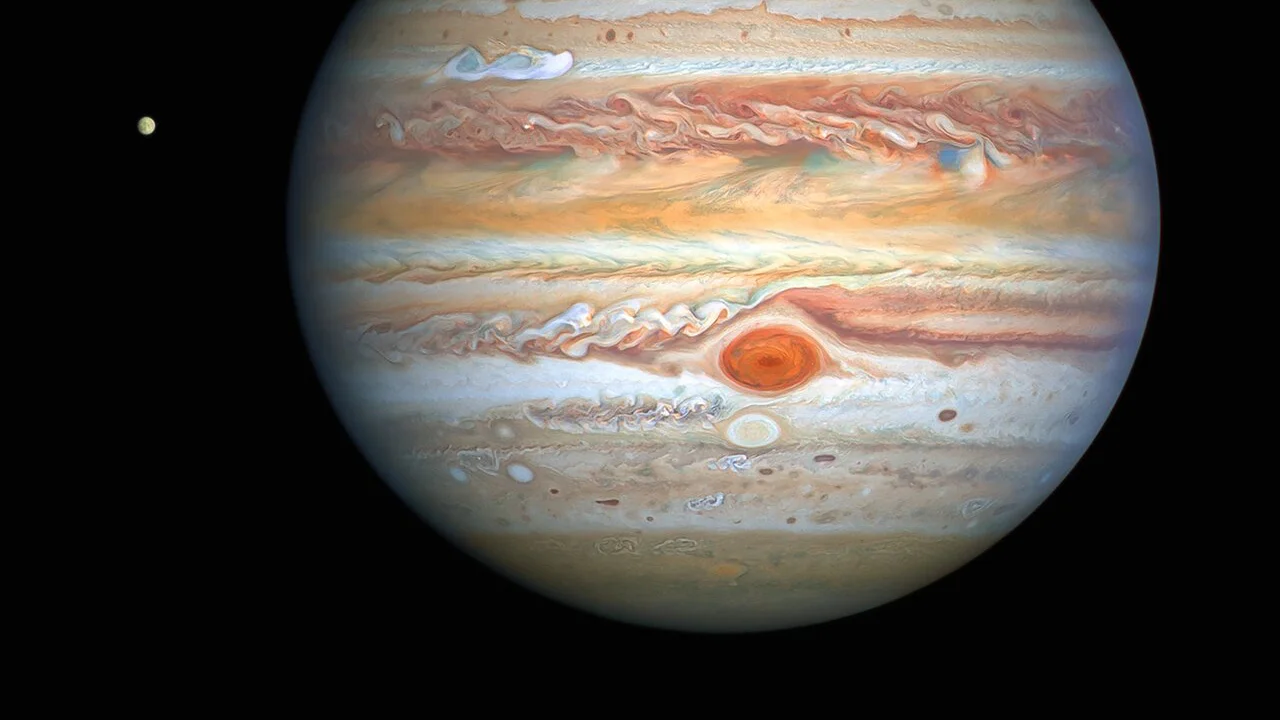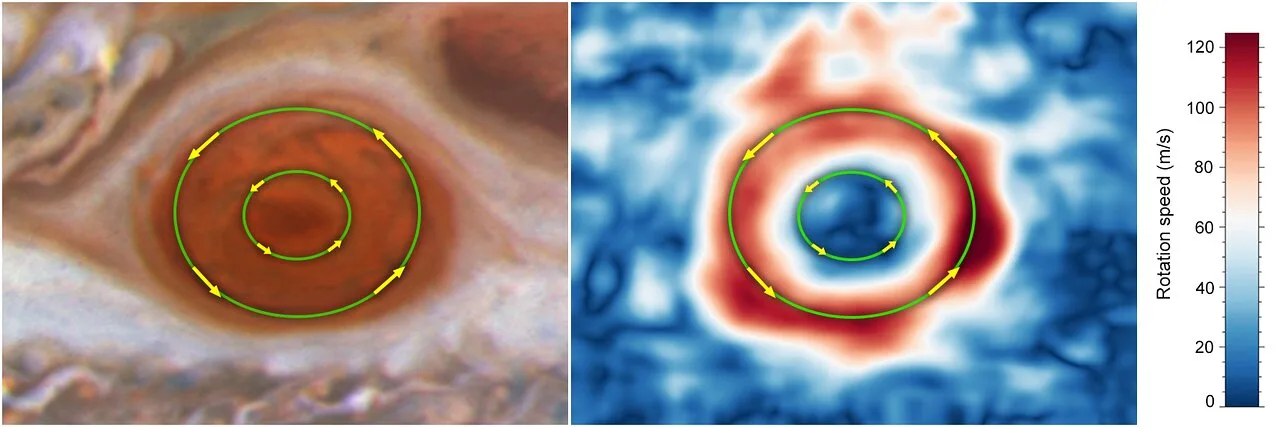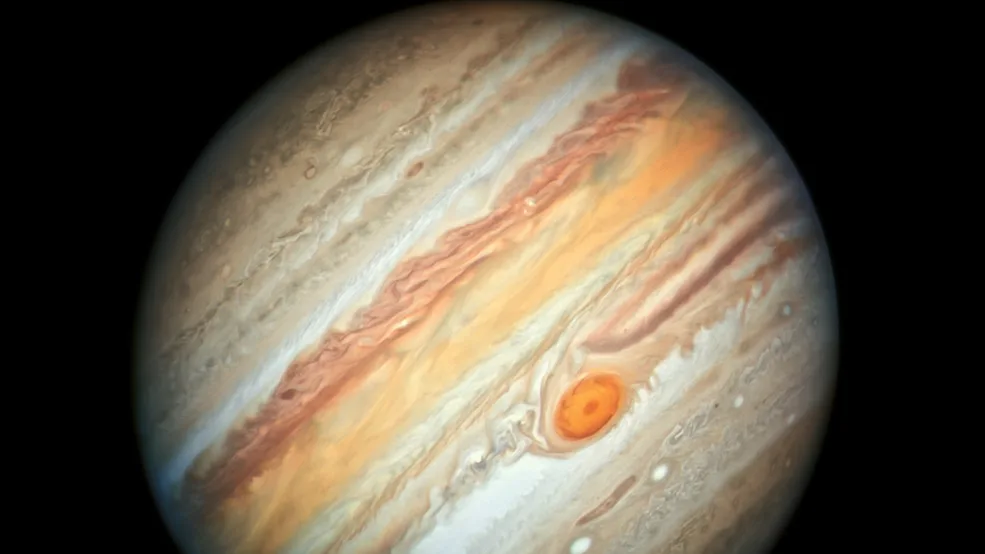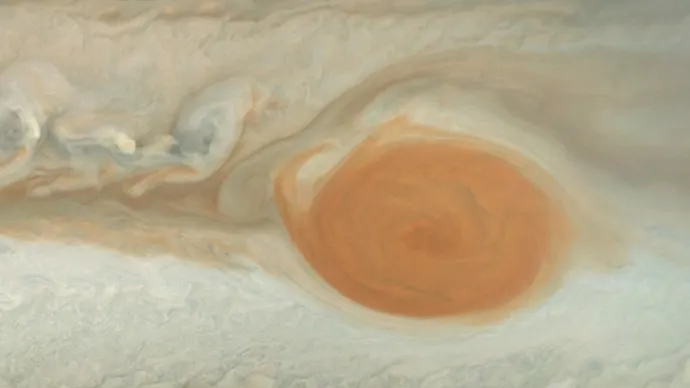
'Storm watcher' Hubble sees winds in Jupiter's Great Red Spot speeding up
The Hubble Space Telescope has spotted a new mystery on Jupiter!
After more than a decade of observations using the Hubble Space Telescope, astronomers discovered that, for some mysterious reason, the winds around the Great Red Spot are speeding up!
Swirling in Jupiter's southern hemisphere for hundreds of years so far, the Great Red Spot is a giant anticyclonic storm, larger than our planet Earth. In meteorological terms, that means it is an immense high-pressure cell - the same kind of weather system we see here on Earth that is characterized by winds that become lighter the closer you get to the core.

This image of Jupiter was captured by the Hubble Space Telescope during the planet's opposition in August of 2020. Credit: NASA, ESA, A. Simon, M.H. Wong, M. Kornmesser
Astronomers have been studying the Great Red Spot for well over 100 years now. In that time, they have confirmed that the Spot follows those same basic wind patterns. Specifically, they have identified two different 'rings' of winds, with lighter winds along the inner ring and stronger winds along the outer ring.
In just the past 10 years or so, however, something new and unexpected was discovered.
As detailed in a new study published this week, a team of astronomers has found that images from the Hubble Space Telescope show that winds in the outer band of the Great Red Spot are accelerating!

Analysis of Hubble Space Telescope images from 2009 to 2020 reveals that the average wind speed around the outer ring of the Great Red Spot, which can exceed 640 kilometres per hour, has been increasing. Credit: NASA, ESA, Michael H. Wong (UC Berkeley)
"When I initially saw the results, I asked 'Does this make sense?'" Michael Wong, the lead researcher from the University of California, Berkeley, said in a Hubble press release.
"No one has ever seen this before," Wong said, "but this is something only Hubble can do. Hubble's longevity and ongoing observations make this revelation possible."
It was the high-resolution imagery that Hubble captured that allowed Wong to use computer software to track the motion within the Spot. By carefully plotting wind vectors — notations of wind speed and direction — this software was able to pick out the changes in velocity over time.
"Since we don't have a storm chaser plane at Jupiter, we can't continuously measure the winds on site," co-author Amy Simon, a researcher at NASA's Goddard Space Flight Center in Greenbelt, Maryland, added. "Hubble is the only telescope that has the kind of temporal coverage and spatial resolution that can capture Jupiter's winds in this much detail."

This image of Jupiter from the Hubble Space Telescope was captured in 2019. NASA, ESA, A. Simon (Goddard Space Flight Center) and M.H. Wong (University of California, Berkeley)
According to the study, the winds in the core of the Great Red Spot remain relatively constant. Between 2009 and 2020, though, Hubble observations showed that winds in the outer ring had accelerated by up to 8 per cent.
"We're talking about such a small change that if we didn't have eleven years of Hubble data, we wouldn't know it had happened," Simon explained. "With Hubble we have the precision we need to spot a trend."
As for the reason for this acceleration, there's no way to know at this time.
"That's hard to diagnose, since Hubble can't see the bottom of the storm very well," said Wang. "Anything below the cloud tops is invisible in the data, but it's an interesting piece of the puzzle that can help us understand what's fueling the Great Red Spot and how it's maintaining its energy."

NASA's Juno spacecraft, currently in orbit around Jupiter, captured the Great Red Spot on Feb. 28, 2019. To the storm's left edge, a region of the 400-year-old storm is seen mixing with the surrounding cloud of gases. (NASA/JPL-Caltech/SwRI/MSSS/Björn Jónsson)
In the past few years, astronomers have noticed other changes with the Great Red Spot. For example, recent observations have shown that the anticyclone is shrinking. Once, it was wide enough to fit three Earths across it. Now, it is only around 16,000 km across, or about 25 per cent wider than Earth.










